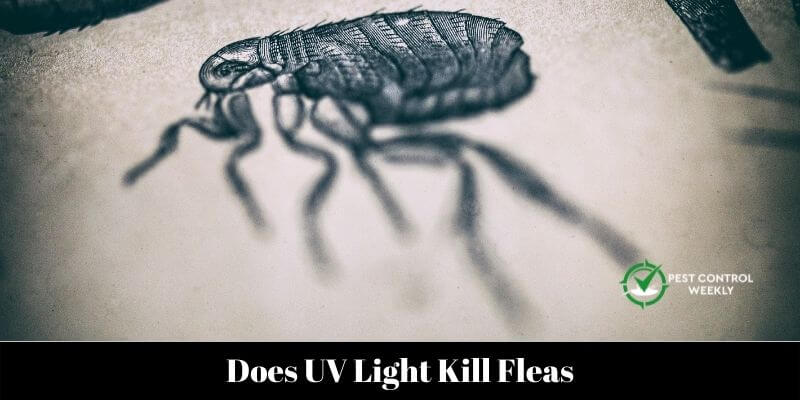Fleas lack eyes that can visualize things; they are drawn to UV light. To track the motions of their host, fleas need UV light. This is what I’m wondering: Do fleas suffer any harm from UV light? Does UV light kill fleas?
Yes, UV light kills fleas when exposed directly to UV light in the C spectrum. It will enter their cells, harm them by disturbing their DNA, and kill them.
Expose fleas to 280 nm UVC light for 30 minutes at a distance of 10 cm to kill them with UV light. Read the entire article to learn more about how UV light affects fleas.
UV Light Vs Fleas
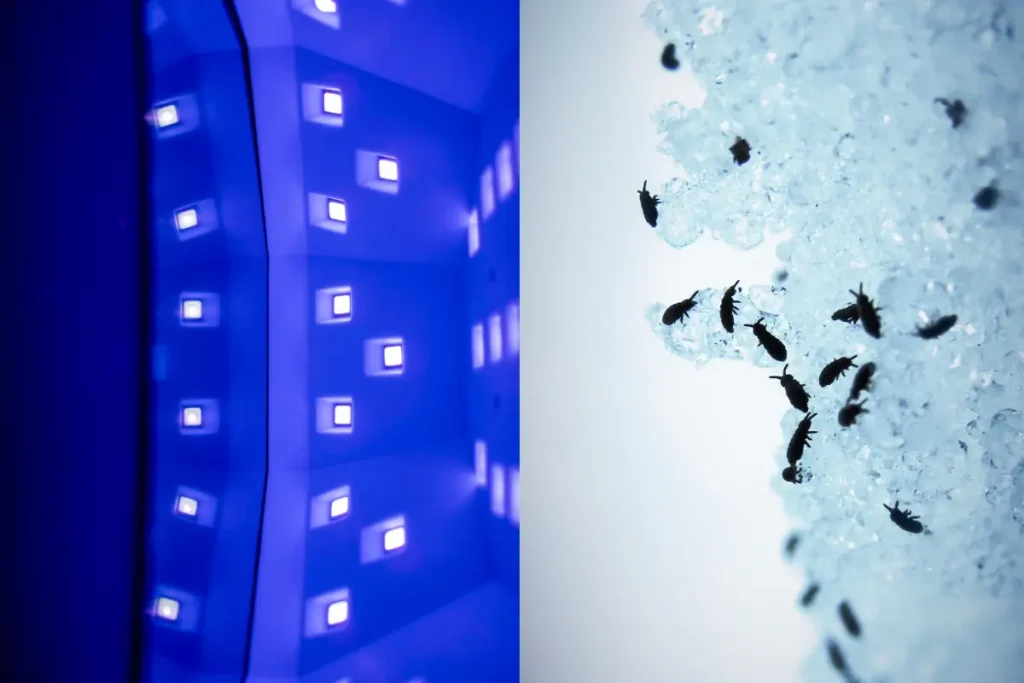
UV light has numerous valuable uses in eliminating fleas. Its interactions with organic molecules have more chemical and biological consequences than simply heating.
DNA of fleas is harmed by short-wave UV radiation, which also sanitizes surfaces it comes into contact with.
The consequences of skin exposure to UV radiation in humans include a suntan and a sunburn, as well as a higher chance of developing skin cancer.
Do Fleas Glow Under UV Light?
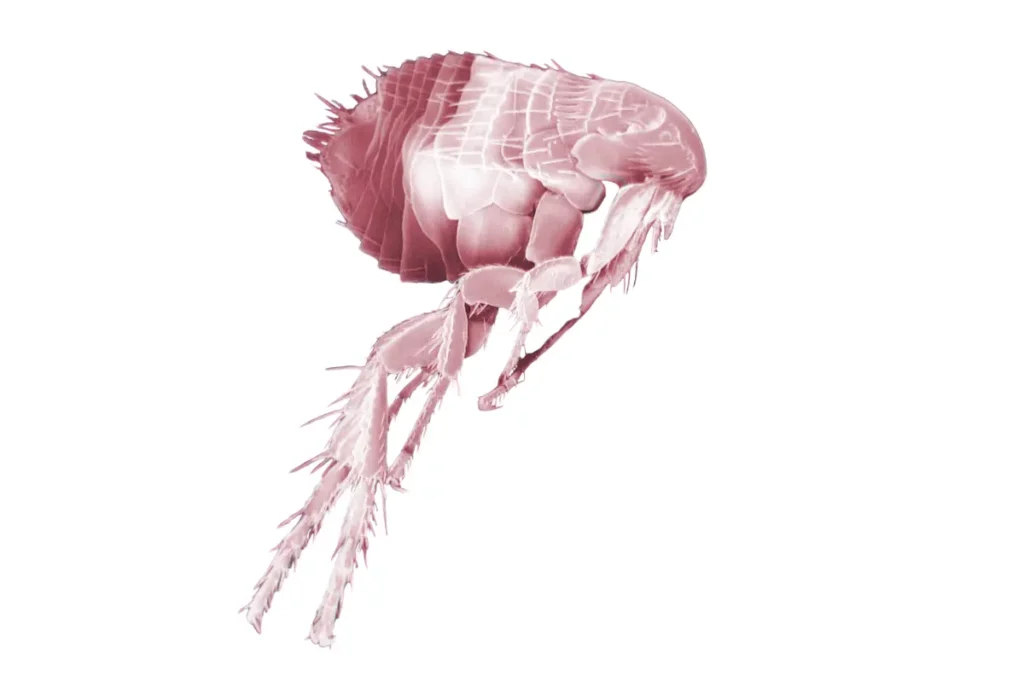
Yes, fleas’ outer coats absorb UV rays seen in the dark and glow under UV light. Finding fleas in a dark, poorly lit space might be challenging since they detest natural light.
Phosphors are also found on the outer shell of fleas. When exposed to UV radiation, they glow in the dark. For this reason, it is commonly used to locate them in dimly lit areas. Fleas on hardwood floors are difficult to spot, and UV detection can be helpful.
Fleas are drawn to UV light because they move similarly. They all have the propensity to gravitate toward hot, angular rays. Since they can detect UV rays, they can recognize their prey since they can survive in the dark.
Will UV Light Kill Flea Eggs?
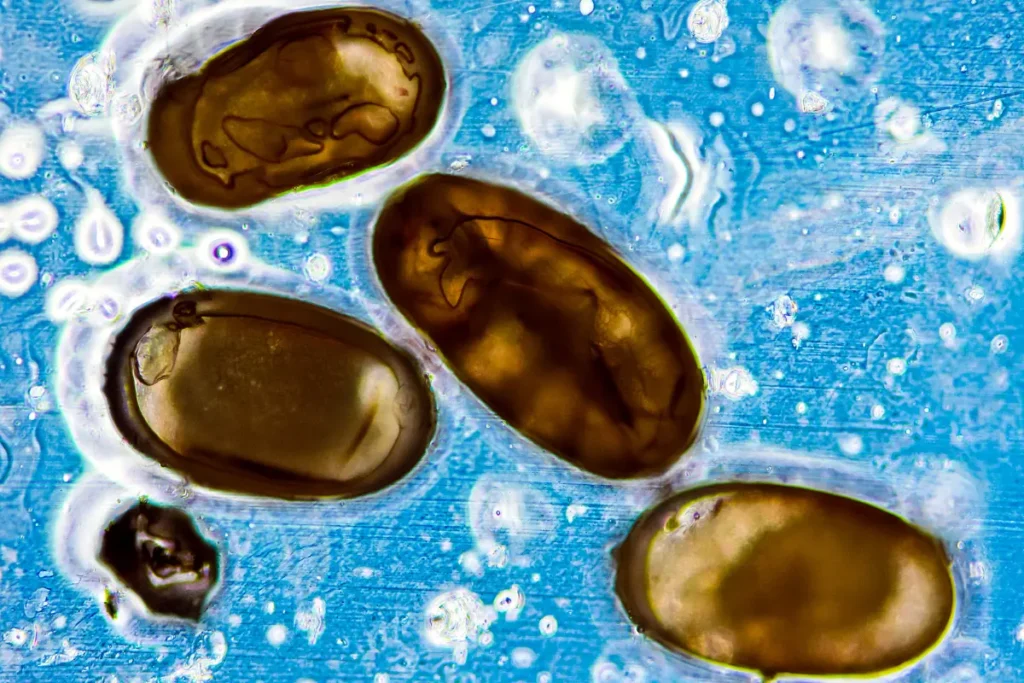
Flea eggs can be killed by exposure to UV-C light with a wavelength of 100–280 nm for 15–30 minutes. The flea eggs’ DNA structures will be penetrated and destroyed, halting the continued growth of the fleas. Eggs must be positioned at least 20 cm away from the UVC light source to be effective.
If fleas are exposed to it near enough, all life cycle phases will be destroyed. By causing DNA lesions, UV light rays damage and terminate the development of eggs. Fleas and other insects can be managed using UVC in places other than a lab.
A flea egg’s cells become highly active when exposed to UV light. They will become weaker as the exposure time increases and the activity level rises. They can no longer support the development phase when weak, which will stop the development of the egg.
Will A Bug Zapper Kill Fleas?
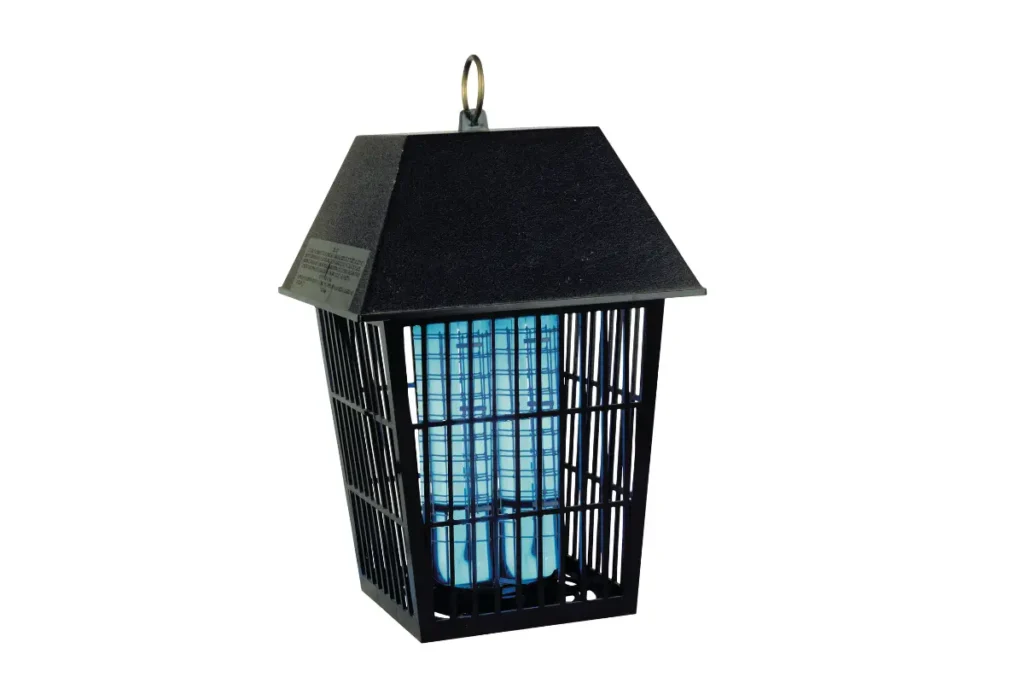
No, fleas are not killed by Bug Zapper. The bug zapper is a device that operates by generating UV light that kills insects but not fleas. Bug zappers are highly successful in killing many insects due to the seductive appeal of their light.
The majority of insects drawn to bug zappers are flying nocturnal insects. However, a bug zapper’s UV light is worthless as a flea treatment since fleas are not nocturnal. On the other hand, since they cannot fly, fleas are not categorized as nocturnal. In addition, these pests hardly respond to the UV light emitted by a bug zapper.
Numerous studies have shown that not all sources of light attract fleas. Instead of UV light, they are more drawn to green-yellow, sporadic light. Fleas remain near their host and are unlikely to go to areas where bug zappers are present. Additionally, they are drawn to green-yellow light rather than an insect zapper’s ultraviolet light.
Can You See Fleas With A UV Light?
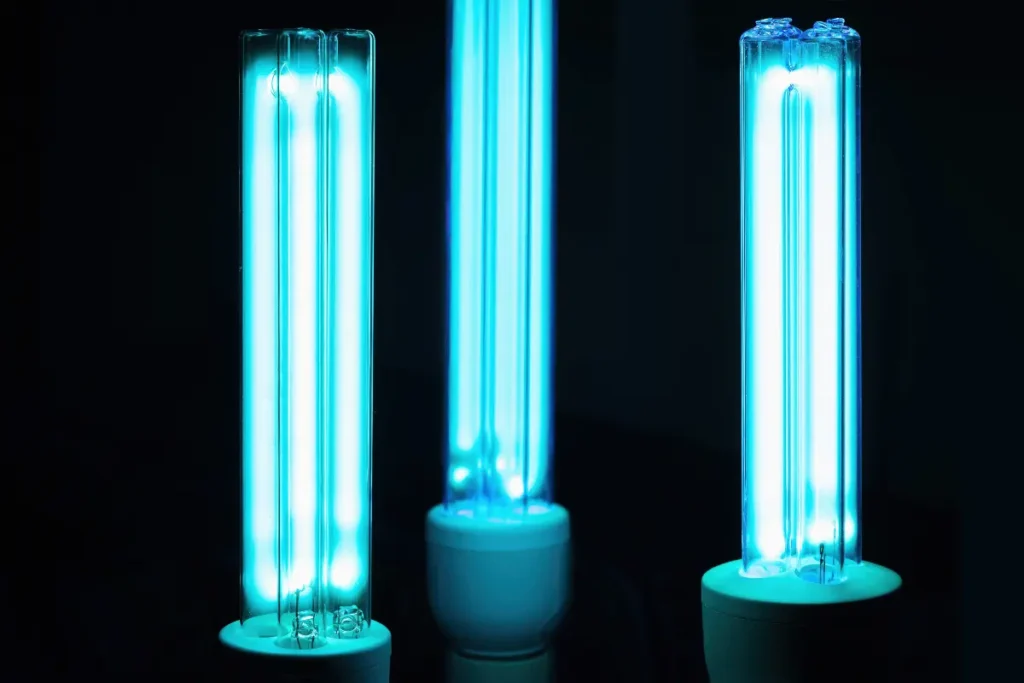
Yes, You can see fleas with a UV light. Even though fleas are most active at night, they are drawn to light and heat while looking for food. When a light source is installed in a dark environment, studies have shown that fleas gravitate to the light within 30 to 40 minutes.
Fleas are attracted to UV light for several reasons, including the fact that it emits heat. Due to characteristics in their skin that absorb and reflect the light, fleas shine under UV light.
Finding fleas is made more accessible by using UV light. Because fleas dislike natural light, it could be more challenging to spot them during the day. Instead, use these to see the fleas:
- Exit the lights.
- Switch on a UV lamp.
Look for flea droppings on beds, beneath blankets, and around corners.
What Kind Of Light Attracts Fleas Under UV Light?
Fleas can quickly detect and attract toward yellow or green UV lights. Thus these colors are the best to employ against them. Fleas, night-flying moths, beetles, and other insects and insect relatives find ultraviolet or near-ultraviolet “black lights”, the lights of “bug zappers,” but without the electrical grid, to be highly enticing.
Interestingly, when the light source is briefly turned off and then rapidly switched back on, their attraction to light is much increased.
Red light in UV light won’t attract fleas; like other insects, it will be difficult for them to recognize and locate them.
Positive photo tactic means that cat fleas are drawn to light sources. Fleas are primarily attracted to the green-to-yellow region of the spectrum, specifically at wavelengths between 500 and 530 nm.
Over twice as many fleas are drawn to green-yellow light than conventional white light. Lighted flea traps become substantially more effective when a green filter is added.
How To Trap And Kill Fleas Using UV Light Rays?
Due to the fleas’ tendency to leap in their direction, ultraviolet radiation can be employed to create a flea trap.
- Place a UVC lamp above a bowl of soapy water close to the affected region to generate a UV flea trap.
- They will be drawn out of hiding by the rays, where they will fall into the soapy water below and perish.
- Fleas can quickly detect and move toward yellow or green UV lights. Thus these colors are the best to employ against them to trap and kill them.
- Use UV rays sparingly on pets’ skin since, in certain circumstances, they may react to them.
- Use the web if feasible when the pets are away since fleas prefer the host to light. Infested bedding exposed to intense UV rays will kill them and their offspring.
What Are The Benefits Of Using UV Light Against Fleas?
Fleas must be nearby for UVC irradiation to be effective. The exposure time needs to be extended. Fleas must be in a consistent location and, if feasible, trapped. When the light begins to burn into a flea, they will begin to leap and hop away from it.
It will take a long time for a single UV lamp in a room to eradicate fleas. When the light begins to impact them, fleas will search for places to hide. Thus, using UV light to kill fleas in an ample space will be ineffective.
Only when they are starving and in need do fleas emerge. They won’t appear if they have a steady host and are already complete due to the light. To survive and produce eggs, fleas require a host, and the UV light only draws them when they need food.
Do UV Light Against Fleas Effective In A Bright Room?
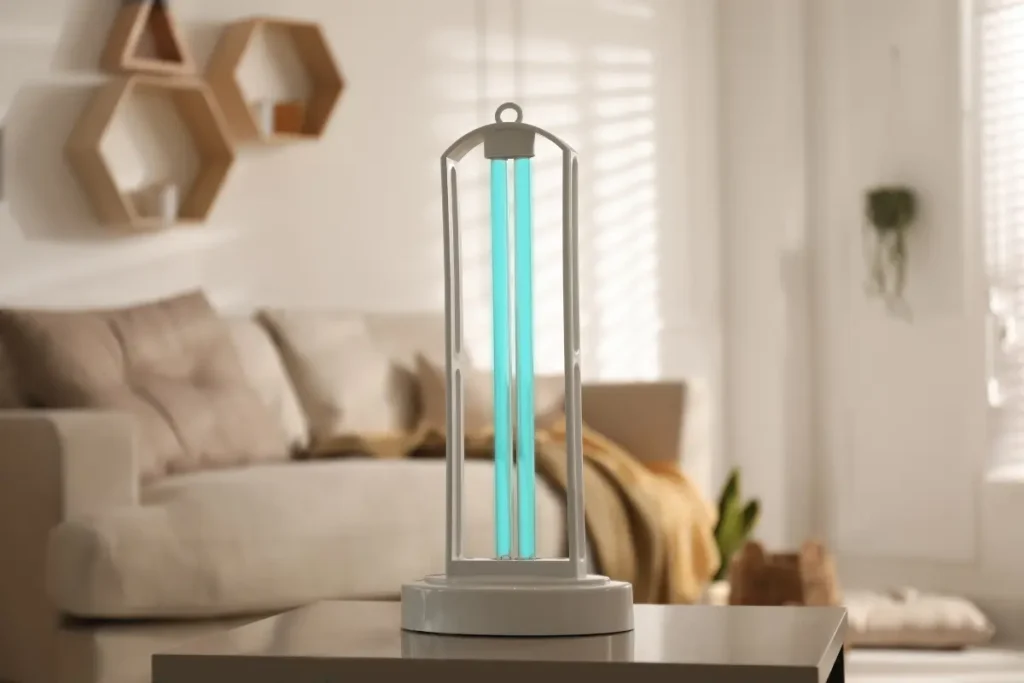
No, a bright room will make ultraviolet rays less effective. UV light will only function in a darkened space. Fleas will naturally stay away from natural light as it is bright enough to make them visible. Because it is an open area, you cannot use this procedure to eliminate fleas in carpets or furniture.
Humans are vulnerable to the dangers of ultraviolet light. Never use them to get rid of fleas while sleeping at night. Long-term exposure can harm the skin. However, bed bugs may be found and eliminated in a dark room using UV light to detect them.
Average light irradiation is ineffective against fleas. UV light must also be in the C spectrum to provide the required effects. Avoid killing fleas with your hands if you encounter any by squishing them.
Conclusion
It is therefore concluded that fleas are killed when exposed directly to UV light in the C spectrum. Their cells will be penetrated and harmed. Fleas are so fast so need visual aids like UV light to locate and eliminate them at night.
As a result of their ability to enter every cell, UVC light’s rays are poisonous to flea eggs. The energy generated by the UV rays cannot be sustained by such cells due to their extreme fragility. Since flea eggs cannot move, UV rays will effectively destroy them since they will have the most cell penetration.
References
Kusakari S-i, Okada K, Shibao M, Toyoda H. High Voltage Electric Fields Have Potential to Create New Physical Pest Control Systems. Insects. 2020.
Zhang J, Li H, Liu M, Zhang H, Sun H, Wang H, Miao L, Li M, Shu R, Qin Q. A Greenhouse Test to Explore and Evaluate Light-Emitting Diode (LED) Insect Traps in the Monitoring and Control of Trialeurodes vaporariorum. Insects. 2020 Feb
